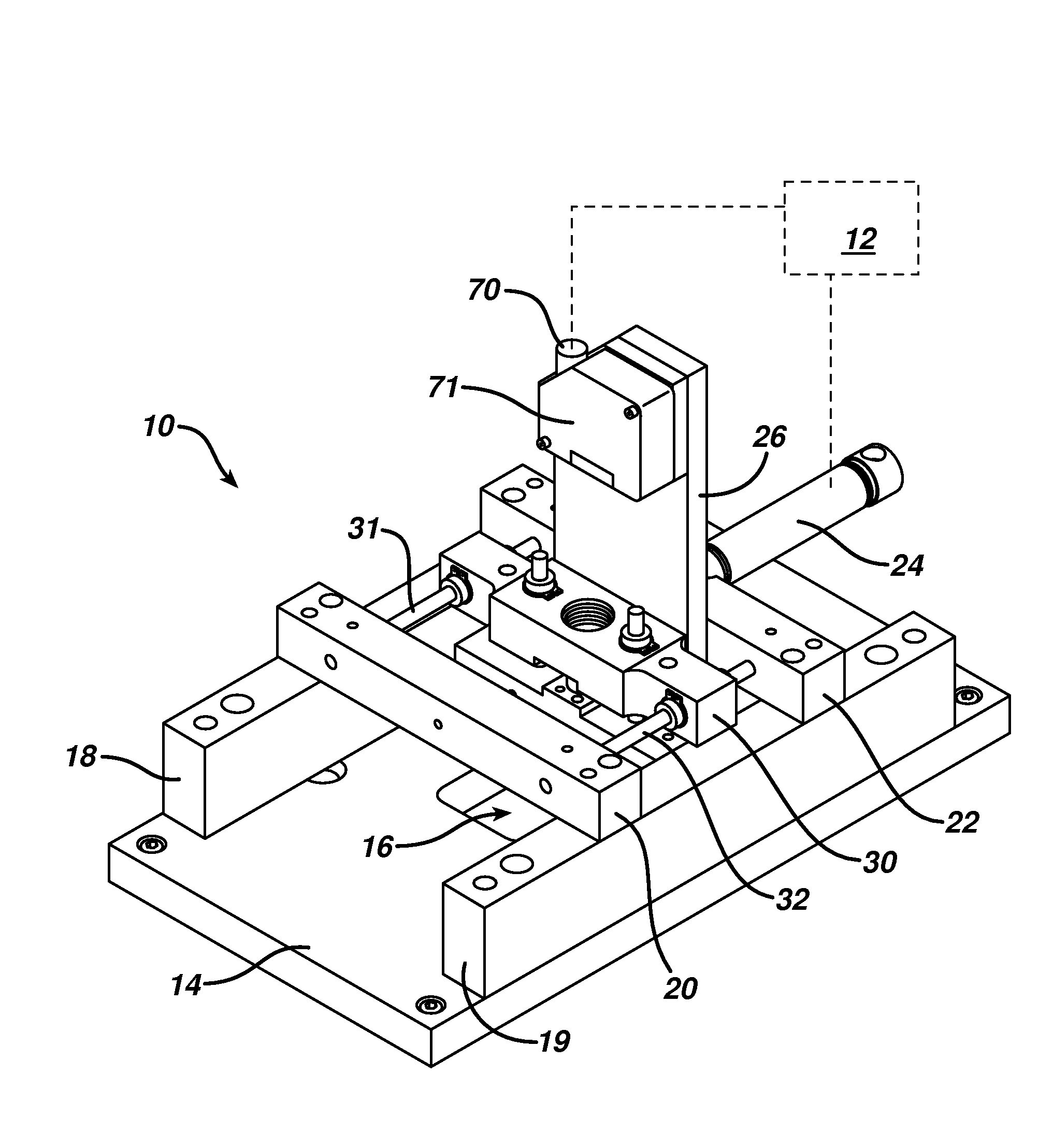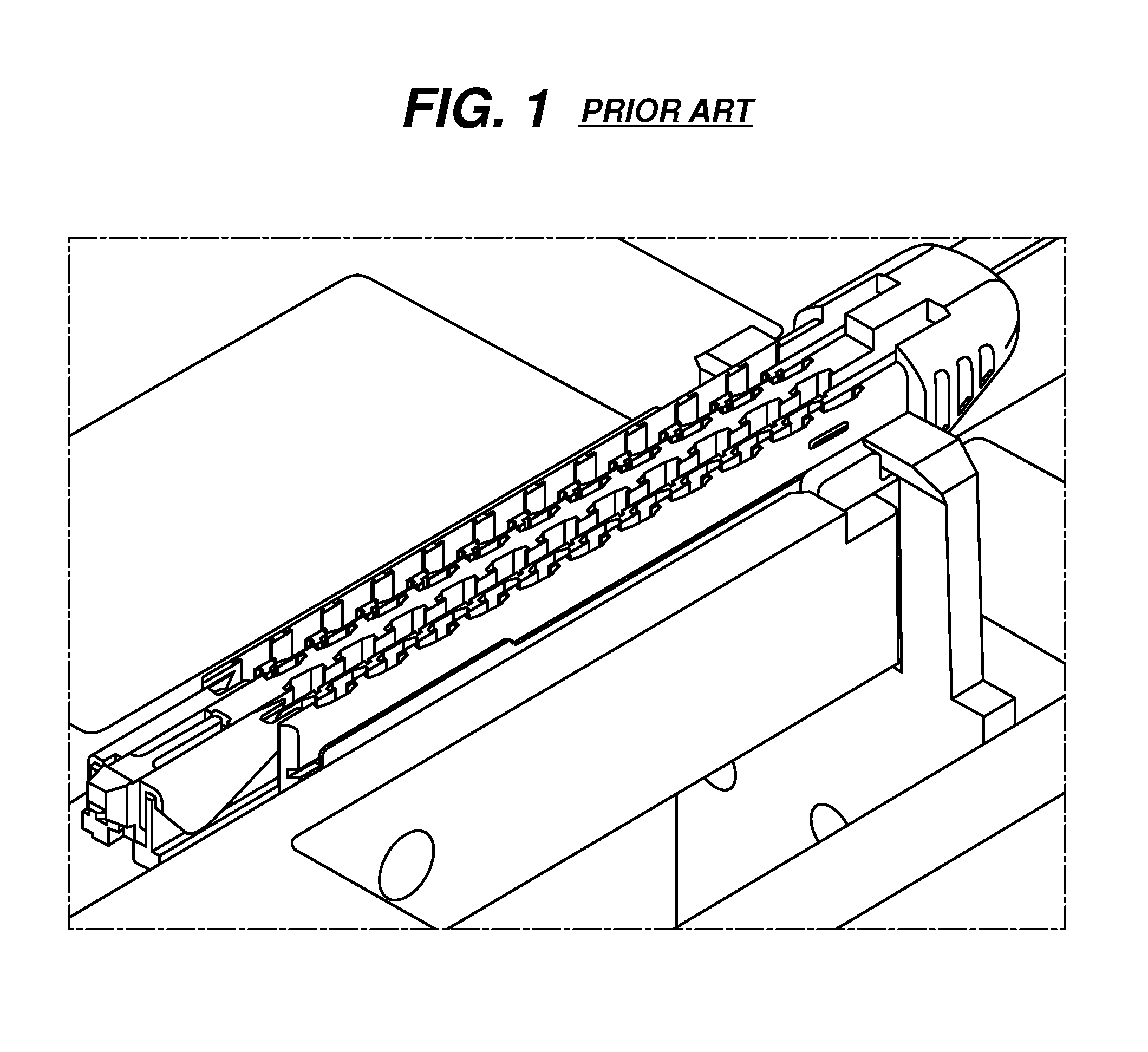Method and apparatus for testing for the presence of excess drivers in a surgical cartridge
a technology for detecting the presence of excess drivers and cartridges, which is applied in the direction of surgery, structural/machine measurement, medical science, etc., can solve the problems of difficult to determine whether too many or too few drivers are placed in a particular aperture, labor-intensive task of inserting drivers into cartridges, and severe danger to patients
- Summary
- Abstract
- Description
- Claims
- Application Information
AI Technical Summary
Benefits of technology
Problems solved by technology
Method used
Image
Examples
Embodiment Construction
[0024]The testing apparatus 10 shown in FIG. 2 is preferably positioned along an assembly line in which cartridges, such as that shown in FIG. 1, are assembled. Preferably, cartridges are mounted in pallets, as described in U.S. Pat. No. 6,990,796 to Schnipke, et al., which is incorporated herein by reference, and moved along an assembly line by a conveyor belt, as is known in the art. Such cartridges are fitted with drivers, one or more springs and other components during the assembly process. After complete assembly, or preferably nearly complete assembly, the cartridge is tested by the testing apparatus 10 in order to determine whether more than the required number of drivers has been inserted into the apertures of the cartridge. After testing, the cartridge is then designated, such as by recording the results of the test in the memory of a central computer 12, as either acceptable if it passed the test, or defective if it failed. This designation is then used to determine subseq...
PUM
 Login to View More
Login to View More Abstract
Description
Claims
Application Information
 Login to View More
Login to View More - R&D
- Intellectual Property
- Life Sciences
- Materials
- Tech Scout
- Unparalleled Data Quality
- Higher Quality Content
- 60% Fewer Hallucinations
Browse by: Latest US Patents, China's latest patents, Technical Efficacy Thesaurus, Application Domain, Technology Topic, Popular Technical Reports.
© 2025 PatSnap. All rights reserved.Legal|Privacy policy|Modern Slavery Act Transparency Statement|Sitemap|About US| Contact US: help@patsnap.com



